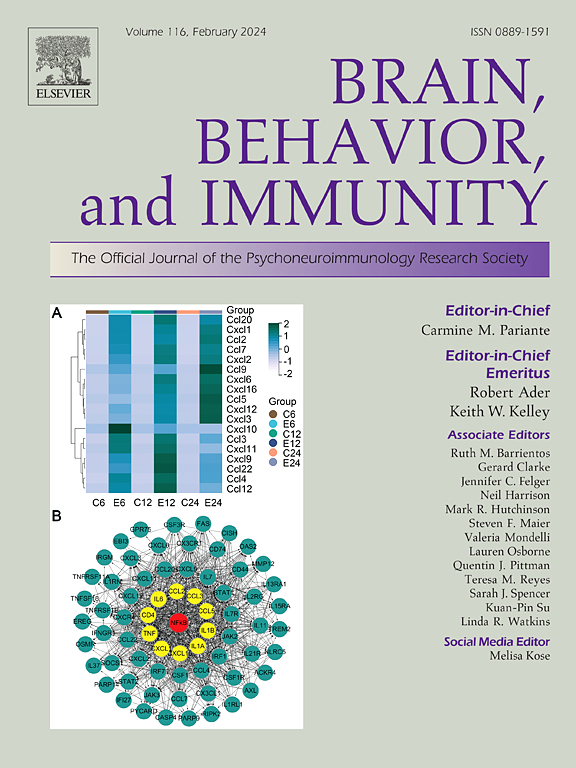An initial investigation of transcutaneous delivery of plasmid DNA encoding interleukin-10 for the treatment of psoriatic skin conditions
IF 8.8
2区 医学
Q1 IMMUNOLOGY
引用次数: 0
Abstract
Psoriasis is a chronic immune-mediated skin disorder characterized by intense local inflammation, epidermal hyperplasia, and leukocyte infiltration. Current treatment approaches for psoriasis aim to alleviate symptoms and prevent disease progression, including systemically administered drugs with whole body side effects. Despite some advances in psoriasis treatment, success has been quite limited. To begin to address this challenge, we undertook an initial investigation of whether transcutaneous delivery of an endogenous anti-inflammatory cytokine could provide an effective, local treatment of psoriatic-like skin conditions. To do this, we utilized a previously documented rodent model of psoriasis, induced via a single topical application of Imiquimod (IMQ) to the shaved back of rats. The therapeutic approach used for this initial investigation was delivery of plasmid DNA encoding rat interleukin-10 (pDNA-rIL10), a non-viral gene therapy approach previously shown to be effective in suppressing neuroinflammatory disorders after localized delivery either intracerebrally or intrathecally. Translation of this CNS therapeutic for use in psoriatic-like skin disorders required reformulation to enable transcutaneous delivery. Toward that end, pDNA-rIL10 was topically applied in Lipoderm HMW, a base explicitly designed to deliver higher molecular weight compounds into skin. Here we show that a single topical application of pDNA-rIL10 in Lipoderm HMW was effective in decreasing mRNA levels of pro-inflammatory cytokines as well as reducing the recruitment of T-cells to IMQ-treated skin. Furthermore, this transcutaneous IL-10 gene therapy decreased signs of skin inflammation, reflected by reduced erythema. Moreover, the results provide an initial indication that IL10 may stimulate hair regrowth in psoriatic-like skin.
编码白细胞介素-10 的 DNA 质粒经皮给药治疗牛皮癣皮肤病的初步研究。
银屑病是一种由免疫介导的慢性皮肤病,以局部强烈发炎、表皮增生和白细胞浸润为特征。目前治疗银屑病的方法旨在缓解症状和防止病情恶化,包括全身用药,但副作用较大。尽管银屑病治疗取得了一些进展,但取得的成功仍然十分有限。为了开始应对这一挑战,我们对经皮给药内源性抗炎细胞因子能否有效治疗银屑病样皮肤病进行了初步研究。为此,我们利用了以前记录的啮齿动物银屑病模型,通过在剃光毛发的大鼠背部单次局部应用咪喹莫特(IMQ)来诱导银屑病。这项初步研究采用的治疗方法是递送编码大鼠白细胞介素-10(pDNA-rIL10)的 DNA 质粒,这种非病毒基因治疗方法以前曾被证明在脑内或经皮内局部递送后能有效抑制神经炎性疾病。要将这种中枢神经系统疗法应用于银屑病样皮肤病,需要重新配制,以实现经皮给药。为此,pDNA-rIL10 在 Lipoderm HMW(一种专门用于向皮肤输送高分子量化合物的基质)中进行了局部应用。我们在这里展示了在 Lipoderm HMW 中局部施用 pDNA-rIL10 能有效降低促炎细胞因子的 mRNA 水平,并减少 T 细胞对 IMQ 处理过的皮肤的招募。此外,这种经皮 IL-10 基因疗法还能减少皮肤炎症症状,红斑的减少就反映了这一点。此外,研究结果还初步表明,IL10 可刺激银屑病样皮肤的毛发再生。
本文章由计算机程序翻译,如有差异,请以英文原文为准。
求助全文
约1分钟内获得全文
求助全文
来源期刊
CiteScore
29.60
自引率
2.00%
发文量
290
审稿时长
28 days
期刊介绍:
Established in 1987, Brain, Behavior, and Immunity proudly serves as the official journal of the Psychoneuroimmunology Research Society (PNIRS). This pioneering journal is dedicated to publishing peer-reviewed basic, experimental, and clinical studies that explore the intricate interactions among behavioral, neural, endocrine, and immune systems in both humans and animals.
As an international and interdisciplinary platform, Brain, Behavior, and Immunity focuses on original research spanning neuroscience, immunology, integrative physiology, behavioral biology, psychiatry, psychology, and clinical medicine. The journal is inclusive of research conducted at various levels, including molecular, cellular, social, and whole organism perspectives. With a commitment to efficiency, the journal facilitates online submission and review, ensuring timely publication of experimental results. Manuscripts typically undergo peer review and are returned to authors within 30 days of submission. It's worth noting that Brain, Behavior, and Immunity, published eight times a year, does not impose submission fees or page charges, fostering an open and accessible platform for scientific discourse.

 求助内容:
求助内容: 应助结果提醒方式:
应助结果提醒方式:


